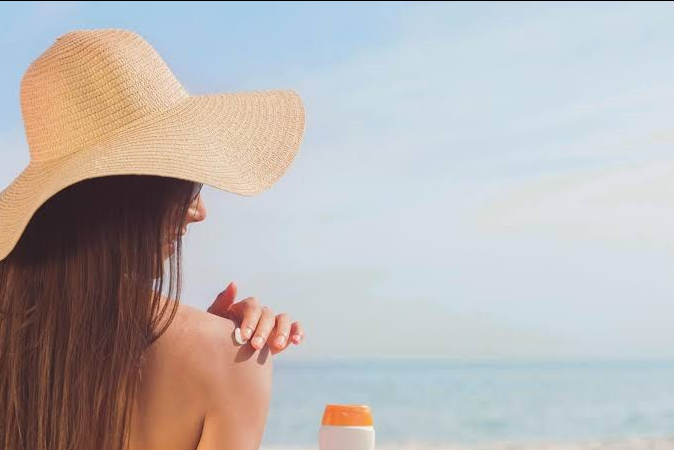Zinc oxide-based sunscreen scientifically found safe
Multiple scientific-research studies overwhelmingly demonstrated that particles of zinc oxide widely used in broad-spectrum sunscreens, when utilized for the skin in a lotion or cream-based product, do not get absorbed into the bloodstream and body thus safe for human health.
Recently, public advocacy groups raised questions on the safety of zinc oxide-based products as sunscreen has been in the news which made consumers wondering whether zinc oxide-based sunscreens are safe.
Zinc oxide controversy immediately diminished when U.S. Food and Drug Administration purposed that zinc oxide and titanium dioxide are the only safe ingredients among currently 16 marketed active ingredients approved for use in sunscreens.
You might be more curious about the next big thing in skin care and the safest sunscreen ingredient so, let’s explores the facts…
Why sun protection is important?
Sun protection is essential as prolonged sun exposure can result in terrible consequences of skin cancer and skin damage. Skin cancer is the most prevalent form of cancer nationwide, with 1.6 million new cases reported in 2015. Centers for Disease Control and Prevention indicates that for every 100,000 people, 22 new melanomas of the skin were reported, with two of the 22 cases resulting in death.
Research studies reported that regular use of sunscreen can significantly lower your risk for skin cancer and aging.
Dermatologists stress to protect skin by using zinc oxide-based sunscreens as it’s unique among sunscreen ingredients, which is indeed a broad-spectrum blocker, protecting from UVA, UVB, and even UVC.
Professor Michael Roberts clearly stated in a study published on University of South Australia official site that "the disastrous consequences of skin cancer and skin damage caused by prolonged sun exposure are much greater than any toxicity if posed by approved sunscreens".
What does the FDA proposed rule say about sunscreens?
U.S. Food and Drug Administration purposed that zinc oxide and titanium dioxide are the only ingredients _among 16 marketed active ingredients currently approved by the FDA for use in sunscreens. The FDA is proposing these two ingredients as "generally recognized as safe and effective" (GRASE).
The other two ingredients PABA and trolamine salicylate, are not (GRASE). And for leftover 12 ingredients there are insufficient safety data to make an affirmative GRASE determination at this time said FDA.
How does zinc oxide work safely & effectively compared to other sunscreen ingredients?
Surprisingly, not all sunscreens protect against both UVA and UVB rays. Zinc oxide, however, is the only safe sunscreen ingredient used to block harmful UVA and UVB rays. It's a photostable, broad-spectrum blocker, so it has one of the broadest UVA coverages of all the sunscreen ingredients currently available in the U.S., as well as UVB coverage.
When compared with another safe ingredient, titanium dioxide reported by FDA, a Francesca Fusco, M.D., dermatologist at Wexler Dermatology in New York City, points out that some studies have shown that titanium dioxide can work as a photosensitizer that can be absorbed by the skin.
Therefore a safe bet is to look for sunscreens that are known to use particles too big to be absorbed such as zinc oxide, which is the most reliable ingredient according to the Environmental Working Group (EWG)."
Should you use sunscreen?
We all know, it's absolutely proven that the sun causes most skin cancers, and in some cases, skin cancer can be deadly. It has also proven that sunscreen helps prevent skin cancer. Two critical Australian studies showed that squamous cell carcinoma reduced by 40 percent and melanoma was by 50 percent in those who used sunscreen daily.
On the other hand, we have also heard rumors about mild risks of sunscreens, but the truth is that the FDA clearly distinguishes between the safe and unsafe currently marketed active ingredients used in sunscreens. Among them, zinc oxide is the only safest ingredient supported by clinical research. It surely protects you from the potentially deadly risks from the sun and skin-aging.
The U.S. Food and Drug Administration seeks to provide guidance on the use of sunscreens.
The safest thing that you can do to protect yourself from the sun is to seek shade between 10:00 a.m. and 2:00 p.m as sun's rays are most strong at that time. But also make sure to get enough sun exposure. It is the best and most reliable source of vitamin D. Also, avoid sunburn by apply sunscreen that includes only the safest ingredients purposed by U.S. Food and Drug Administration such as zinc oxide.
Sum it up! We hope that above scientific findings help improve consumer confidence in zinc oxide based products and in turn lead to better sun protection.
Comments
There are 0 comments on this post












